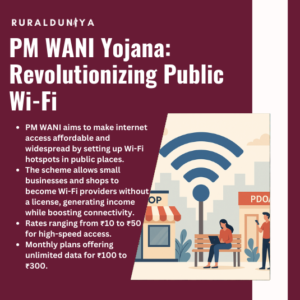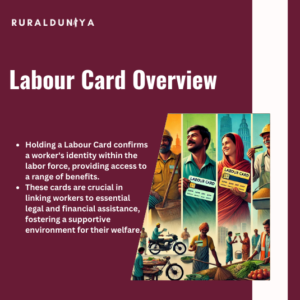You’ve likely heard terms like “climate change,” “global warming,” and “climate crisis” tossed around in conversations, news reports, and social media. But what do they truly mean? Why are they significant? And more importantly, how do they impact our daily lives?
In this guide, we’ll unravel the complex threads of it—its causes, effects, and what we can actually do about it. Let’s dive in! 🌊
What Is Climate Change?
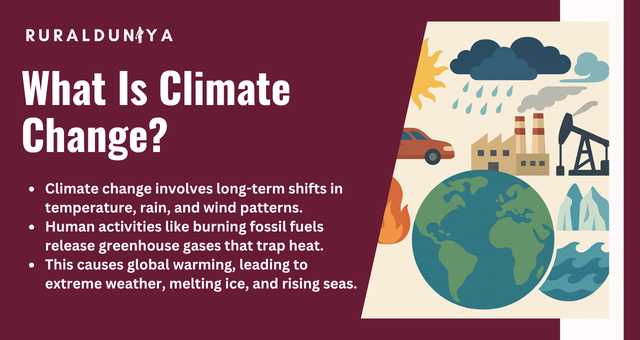
At its core, climate change refers to long-term changes in temperature, rainfall patterns, wind, and other elements of the Earth’s climate system. 🌦️
🌍 While the planet’s climate has naturally fluctuated for millions of years, today’s rapid shifts are mostly driven by human activity—especially from burning fossil fuels like coal, oil, and natural gas ⛽.
These fuels release greenhouse gases (GHGs) like CO₂ and methane into the atmosphere, trapping heat and causing global warming 🔥. This warming triggers side effects like extreme weather, melting glaciers, and rising sea levels 🌊.
A Brief History of Climate Change
Our planet has seen many climate shifts—from ice ages ❄️ to warmer interglacial periods. But the game changed in the Industrial Revolution (late 1700s), when coal-powered factories and machines led to a steep rise in emissions 🚂.
Since then, human-induced carbon emissions have caused temperatures to rise at an alarming rate, leading us into what scientists call the current climate emergency 🚨.
Climate Change in India
India, with its 1.4 billion people and diverse geography, is one of the most climate-vulnerable countries. Here’s why:
- 🌡️ Temperature Rise: India has warmed by 0.7°C between 1901 and 2018.
- 🌾 Agriculture: Erratic monsoons and heat stress affect food crops like rice and wheat.
- 🚱 Water Stress: Melting Himalayan glaciers and poor rainfall management lead to water crises.
- 🏥 Public Health: Increased respiratory illnesses due to heatwaves and pollution.
- 🧳 Migration: Rising sea levels and flooding push people to leave their homes.
🔎 India must focus on climate resilience, sustainable farming, and expanding renewable energy to tackle this crisis head-on.
Climate Change vs. Global Warming
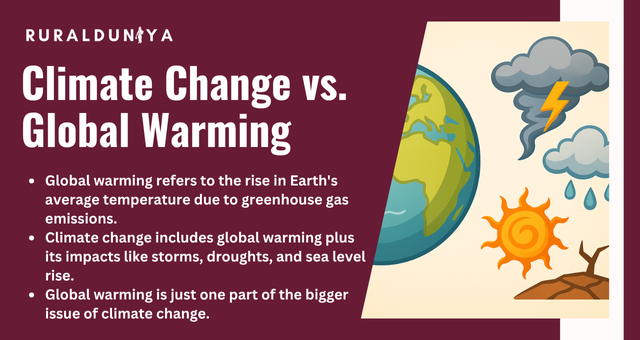
Let’s clear the confusion:
- 🌡️ Global Warming = The planet’s increasing average temperature, mainly from greenhouse gas emissions.
- 🌪️ Climate Change = A broader term that includes global warming and its consequences (storms, sea level rise, droughts).
So yes, global warming is part of climate change, but the impacts go much further. 🌍
Causes of Climate Change
Here’s what’s heating up the Earth:
- ⛽ Burning Fossil Fuels – Cars, power plants, factories = major CO₂ emitters
- 🌳 Deforestation – Cutting trees reduces CO₂ absorption
- 🐄 Agriculture – Livestock emit methane, a potent GHG
- 🏭 Industrial Activity – Cement, steel, and chemicals = GHG heavy
- 🗑️ Waste Management – Landfills release methane during decomposition
💡 Solution? Transition to clean energy, protect forests, and adopt sustainable practices.
Types of Climate Change Impacts
Depending on where you are, it shows up differently:
- 🌴 Tropical regions – Stronger cyclones, unpredictable rainfall
- 🏜️ Dry areas – More droughts, desertification
- 🌧️ Temperate zones – Longer allergy seasons, floods
- 🧊 Polar regions – Ice melt, sea level rise
- 🌊 Coastal zones – Erosion, salty groundwater
🌎 This is why climate adaptation is not one-size-fits-all.
10 Effects of Climate Change
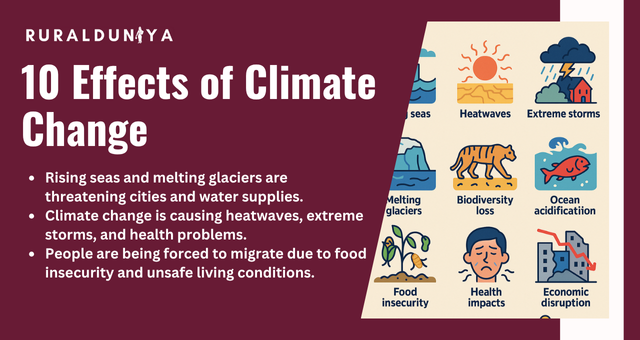
- 🌊 Rising seas – Swallowing coastlines and cities
- 🔥 Heatwaves – Health risks and worker fatigue
- 🌪️ Extreme storms – Destroying homes and lives
- 🧊 Melting glaciers – Affecting freshwater supplies
- 🐾 Biodiversity loss – Species going extinct
- 🧪 Ocean acidification – Coral bleaching and dying fish
- 🌾 Food insecurity – Failed harvests = hunger
- 🤧 Health impacts – Disease spread and air quality decline
- 🏗️ Economic disruption – Infrastructure damage, GDP loss
- 🚛 Climate migration – People leaving unlivable areas
Climate Change Reports: What the Science Says
📝 According to the Intergovernmental Panel on Climate Change (IPCC) 2023 report:
- We’re already 1.2°C warmer than pre-industrial levels.
- A 1.5°C rise could occur before 2030 if emissions continue unchecked.
- Immediate, large-scale action is needed to cut emissions by 45% by 2030.
📉 The longer we wait, the harder (and more expensive) it becomes to adapt.
Climate Change Progress: Are We Improving?
Yes—but slowly:
- ☀️ Solar energy is now cheaper than coal in many countries.
- 🌬️ Wind power is rapidly expanding in Europe, China, and the U.S.
- 🚗 Electric vehicles (EVs) are becoming mainstream.
- 🌱 Green jobs are on the rise, especially in clean tech.
India is also pushing its Panchamrit goals—aiming for net-zero emissions by 2070.
Climate Change Performance Index (CCPI)
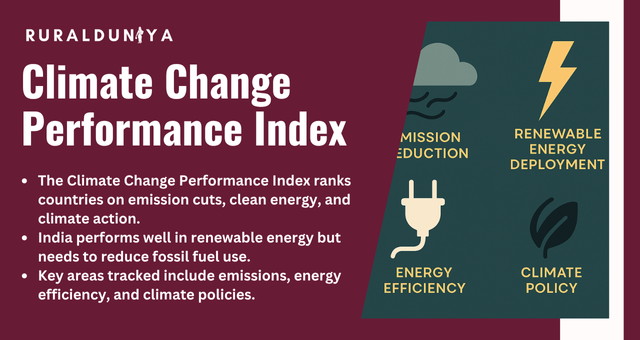
This global index tracks how countries are handling the climate crisis based on:
- 🌫️ Emission reduction
- ⚡ Renewable energy deployment
- 🔌 Energy efficiency
- 📜 Climate policy
🇮🇳 India ranks relatively well (high in renewable energy use), but still needs to improve on reducing fossil fuel dependency and urban air quality.
Why Climate Change Action Matters
Here’s why this should be everyone’s issue:
- 🧠 It affects your health – More asthma, heatstroke, infections
- 💰 It hits your wallet – Crop failure, fuel prices, flood damage
- 🐾 It threatens life on Earth – 1 in 6 species face extinction
- 🏙️ It reshapes cities – Infrastructure must adapt or crumble
- ✊ It’s about justice – Poorer communities suffer more
Everyday Climate Change You Might Notice
You might already be seeing these signs:
- 🌦️ Weird weather: rain in dry seasons, dry heat in monsoon
- 💨 Bad air days: smoky skies or air quality warnings
- 💸 Rising bills: more energy use to cool homes
- 🌾 Costlier groceries: bad harvests = price hikes
- 🤒 More illnesses: allergies, heat rashes, breathing trouble
What Happens If We Do Nothing?
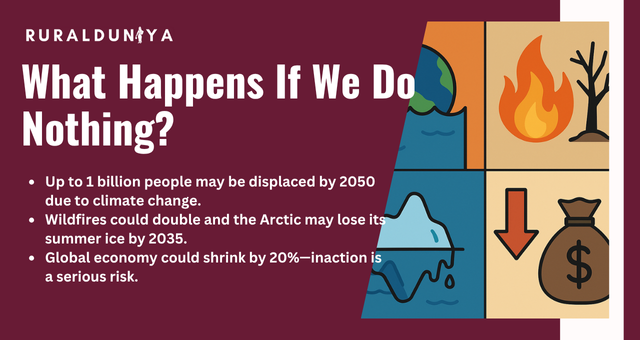
If the world continues on this path:
- 🌊 1 billion people could be displaced by 2050
- 🔥 Wildfires will double in frequency
- 🧊 Arctic summers may become ice-free by 2035
- 💸 Global GDP could shrink by up to 20%
❌ Doing nothing isn’t just risky—it’s dangerous.
What Can We Do? Climate Change Solutions That Work
Here’s what you, I, and our leaders can act on today:
- 💡 Switch to energy-efficient appliances
- 🚴 Use public transport or electric vehicles
- 🛍️ Shop sustainably (less plastic, less meat)
- 🌳 Support tree planting and rewilding
- 📣 Vote for climate-friendly policies
- ☀️ Install solar panels (if you can)
- ♻️ Embrace zero-waste living
Every small action lowers your carbon footprint. 🌍
To Conclude
Climate change isn’t just science—it’s about people, communities, and our future. ⏳
By choosing clean energy, changing habits, and supporting smart policies, we can reverse course and create a world that’s not just livable—but beautiful, green, and thriving. 💚
So, ready to join the movement?
Let’s do this—together. 🌎✊
FAQs
What is climate change in simple words?
It means the Earth weather is acting differently like more heatwaves, floods, or storms mostly because of pollution from cars, factories, and cutting too many trees.
How does climate change affect me personally?
It can raise your electricity bill, make summers hotter, increase health problems like allergies, and even make fruits and veggies more expensive.
Can one person really help fight climate change?
Yes! Small changes like saving energy, using less plastic, or planting trees add up when millions do them together.
What’s the biggest cause of climate change?
Burning things like coal, oil, and gas for energy is the biggest cause—it releases gases that trap heat and make Earth hotter.

Nishank is a social impact enthusiast with a solid foundation in public policy, micro-enterprise, and agribusiness. Growing up in a farmer’s family has given him a profound connection to rural communities, fueling his passion to empower people towards self-reliance. He completed his undergraduate studies at the Delhi University and earned a master’s degree in Rural Management from National Institute of Rural Development & Panchayati Raj in Hyderabad.

